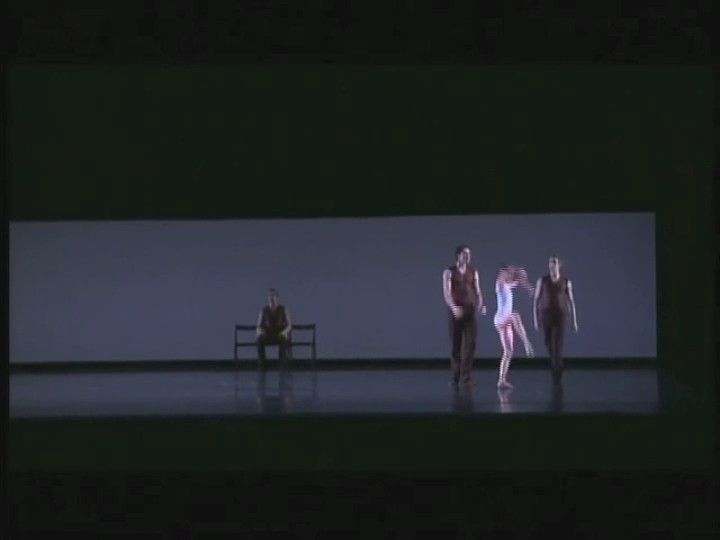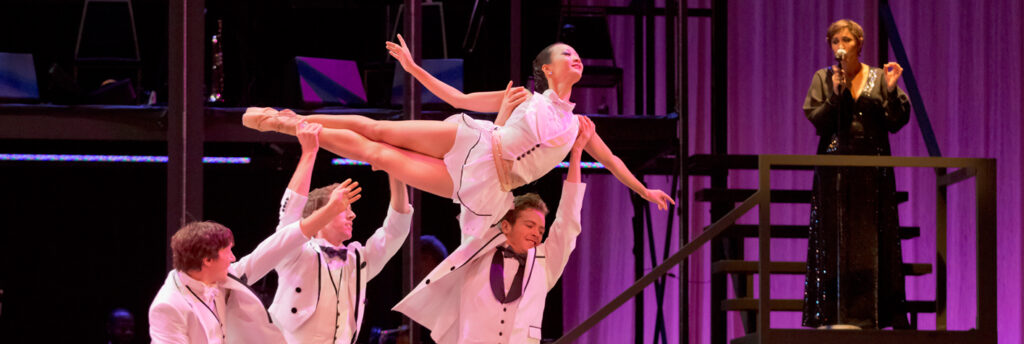
Nicolo Fonte
by Linda Besant, OBT Archivist
Nicolo Fonte has accepted the position of Resident Choreographer with Oregon Ballet Theatre starting with our upcoming “Season of Giants.” This is joyous news for all who treasure great choreography and for the dancers in the company. Ever since Fonte made Bolero on OBT in 2008, his work has fascinated me, and I’m gratified to find that audiences and critics all over the world agree, praising his “strong, abstract movement vocabulary,” and the way he “renders his competence in surprising, stimulating dance—original and self-willed.” (Wohlthat and Bürgin, Basel, Switzerland)
But why? What makes Fonte’s choreography so outstanding? I’ve chosen images from OBT’s gallery of photographs that are worth a thousand words to show why I find his choreography so engaging and so emotionally eloquent:
He doesn’t shy away from moments of unfettered exuberance, whether he’s working with company dancers-
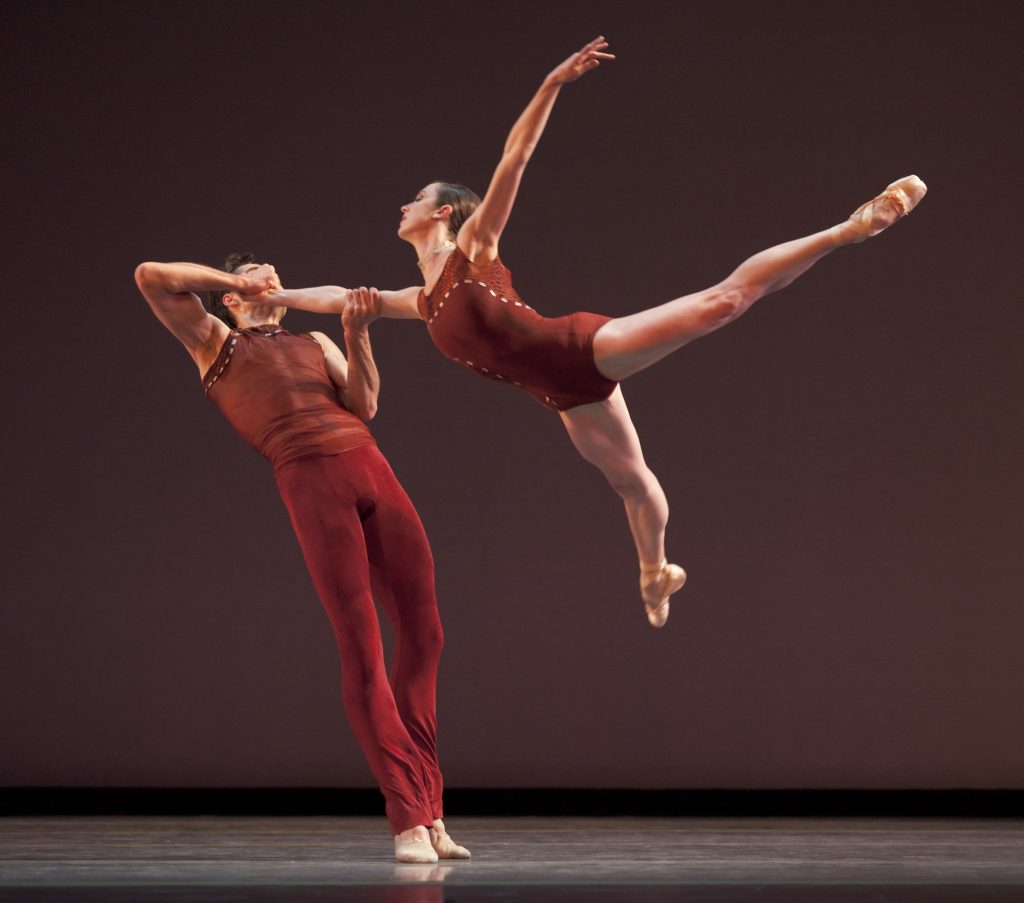 Alison Roper and Artur Sultanov, Bolero, 2008. Photo: Blaine Truitt Covert
Alison Roper and Artur Sultanov, Bolero, 2008. Photo: Blaine Truitt Covert
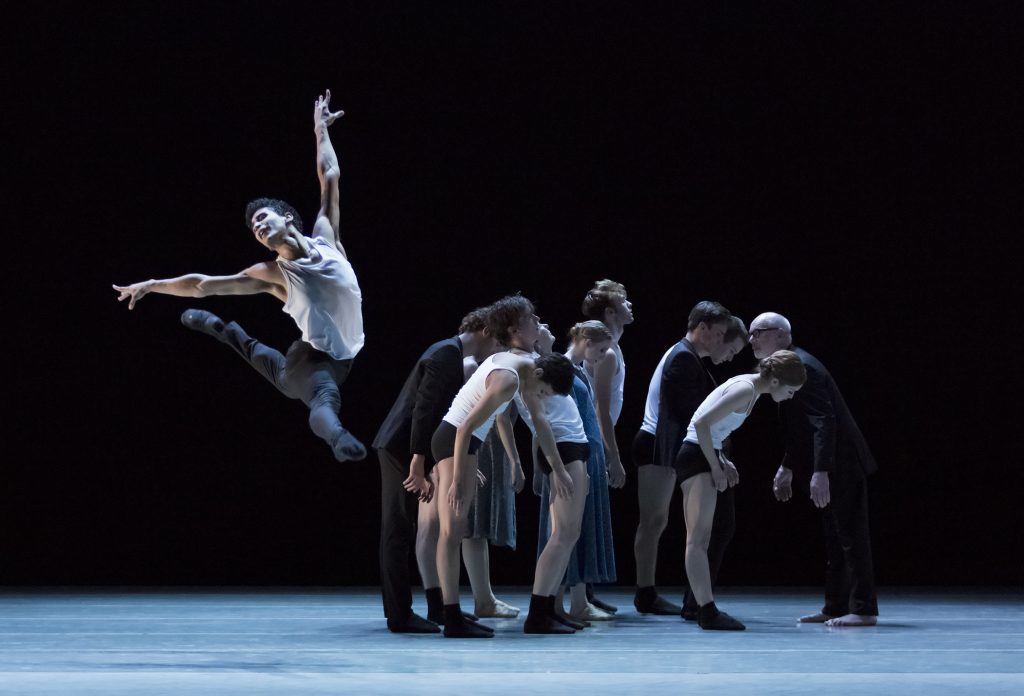 Jordan Kindell, Beautiful Decay, 2016. Photo: Blaine Truitt Covert
Jordan Kindell, Beautiful Decay, 2016. Photo: Blaine Truitt Covert
-or students from The School of Oregon Ballet Theatre.
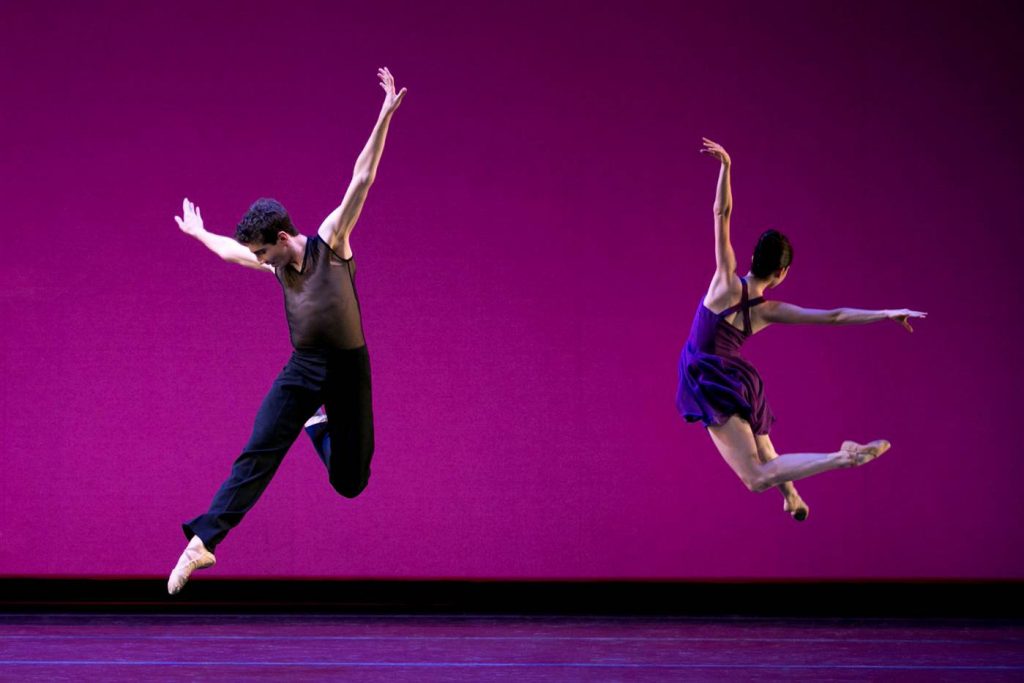 Paige Wilkey and Mikey Garcia, Accidental Signals, 2015. Photo: James McGrew
Paige Wilkey and Mikey Garcia, Accidental Signals, 2015. Photo: James McGrew
His partnering is endlessly inventive,
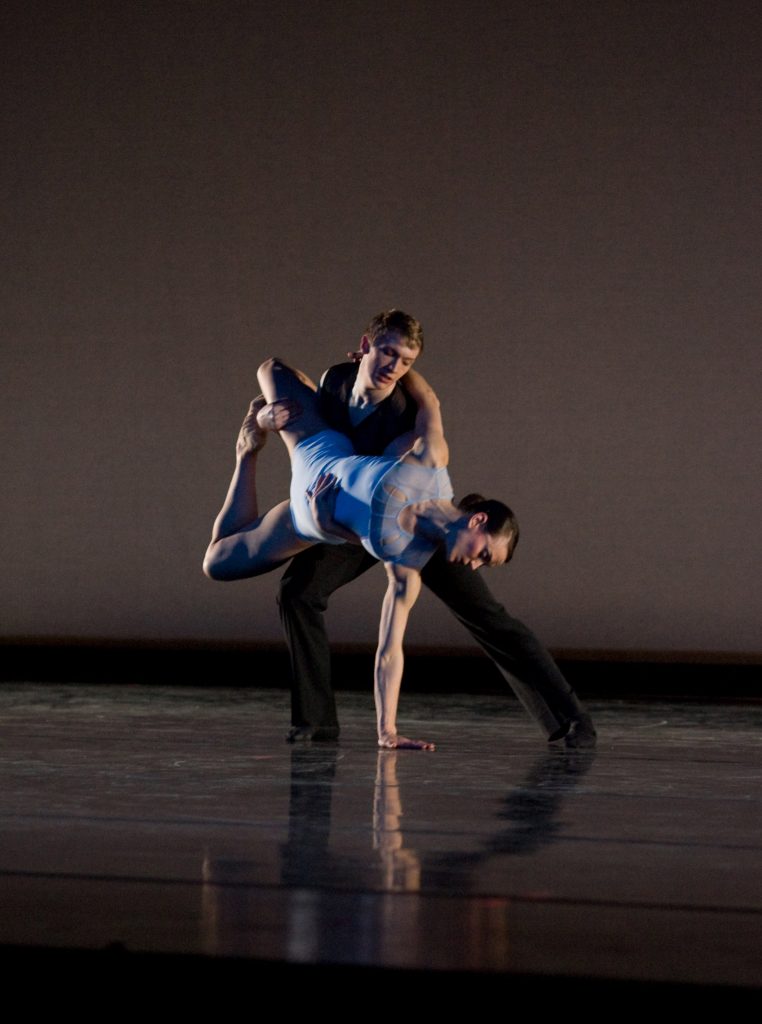 Kathi Martuza and Steven Houser, Left Unsaid, 2009. Photo: James McGrew
Kathi Martuza and Steven Houser, Left Unsaid, 2009. Photo: James McGrew
branching off from classical ballet partnering in ways that flow organically
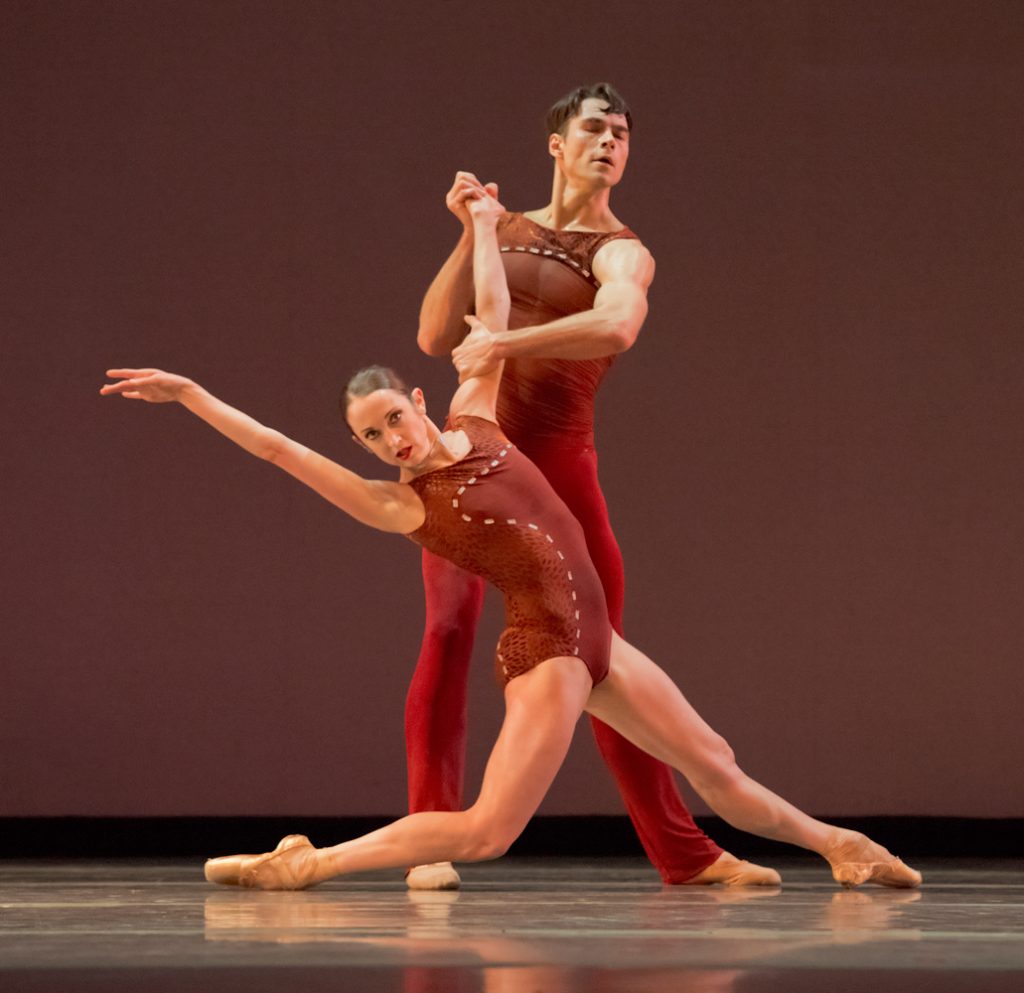 Alison Roper and Artur Sultanov, Bolero, 2014. Photo: Blaine Truitt Covert
Alison Roper and Artur Sultanov, Bolero, 2014. Photo: Blaine Truitt Covert
and seem inevitable with the music.
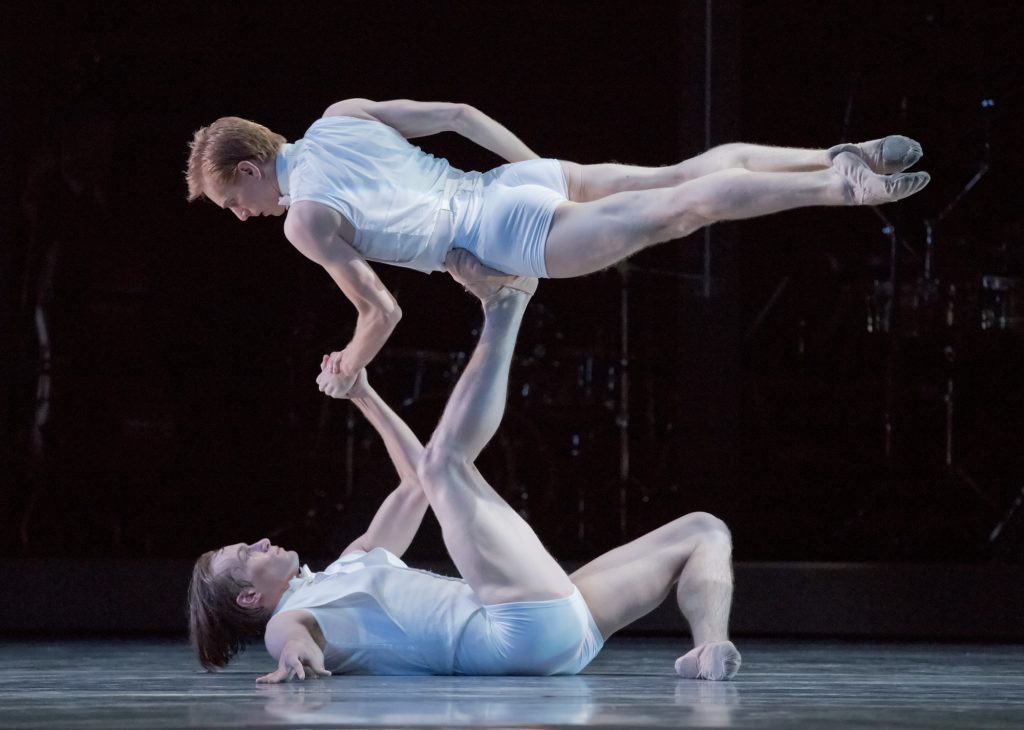 Colby Parsons and Chauncey Parsons, Never Stop Falling (In Love), 2014. Photo: James McGrew
Colby Parsons and Chauncey Parsons, Never Stop Falling (In Love), 2014. Photo: James McGrew
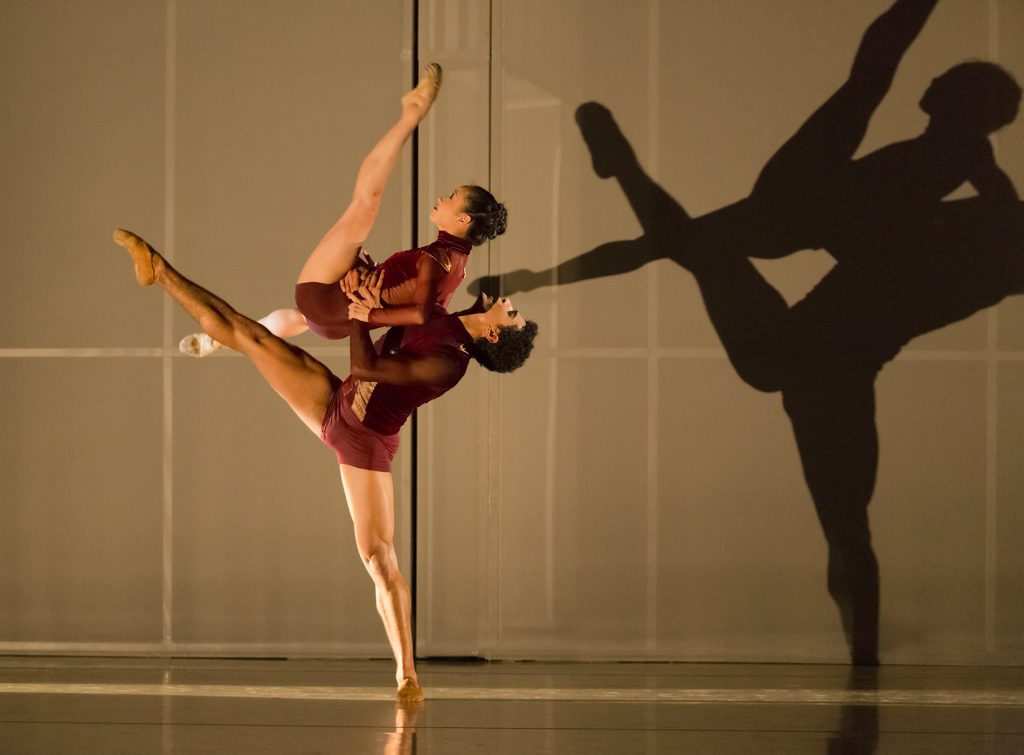 Xuan Cheng and Jordan Kindell, Beautiful Decay, 2016. Photo: Blaine Truitt Covert
Xuan Cheng and Jordan Kindell, Beautiful Decay, 2016. Photo: Blaine Truitt Covert
He also loves the increased possibilities presented by group partnering.
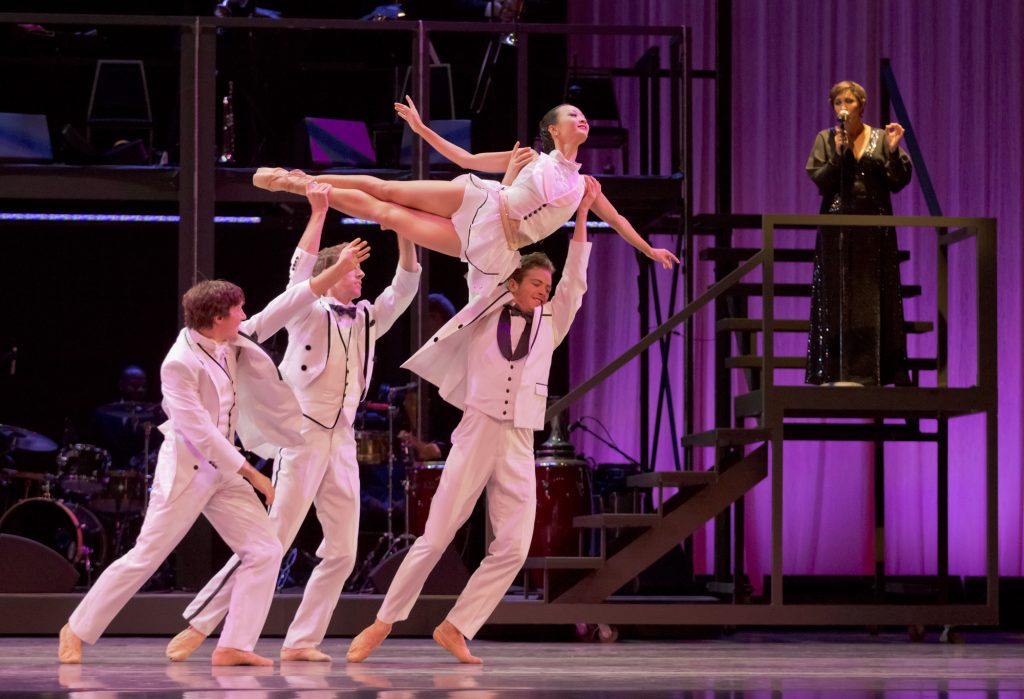 Xuan Cheng with Michael Linsmeier, Brian Simcoe, Avery Reiners, and Pink Martini’s China Forbes, Never Stop Falling (In Love), 2014. Photo: Blaine Truitt Covert.
Xuan Cheng with Michael Linsmeier, Brian Simcoe, Avery Reiners, and Pink Martini’s China Forbes, Never Stop Falling (In Love), 2014. Photo: Blaine Truitt Covert.
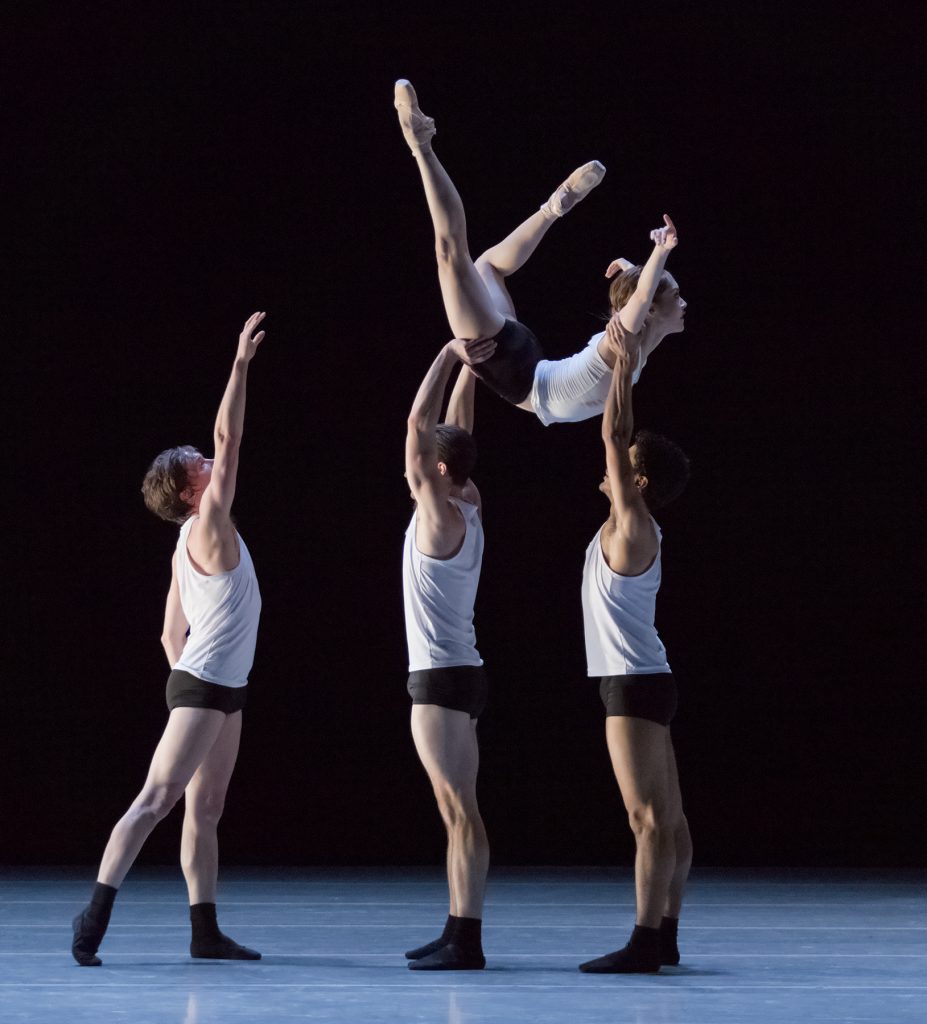 Ansa Deguchi with Michael Linsmeier, Peter Franc, and Jordan Kindell, Beautiful Decay, 2016. Photo: Blaine Truitt Covert
Ansa Deguchi with Michael Linsmeier, Peter Franc, and Jordan Kindell, Beautiful Decay, 2016. Photo: Blaine Truitt Covert
He seamlessly incorporates other kinds of movement into his choreography. For example, his dancers often flow through yoga poses like this revolved triangle.
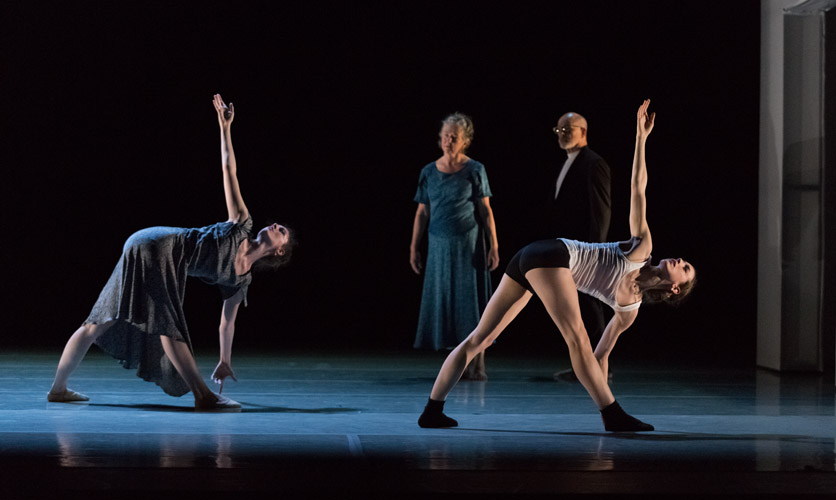 Kimberly Nobriga and Emily Parker with Susan Banyas and Gregg Bielemeier, Beautiful Decay, 2016
Kimberly Nobriga and Emily Parker with Susan Banyas and Gregg Bielemeier, Beautiful Decay, 2016
Photo: Blaine Truitt Covert
He has a particular gift for allowing moments of stillness where we can glimpse a dancer’s essence…
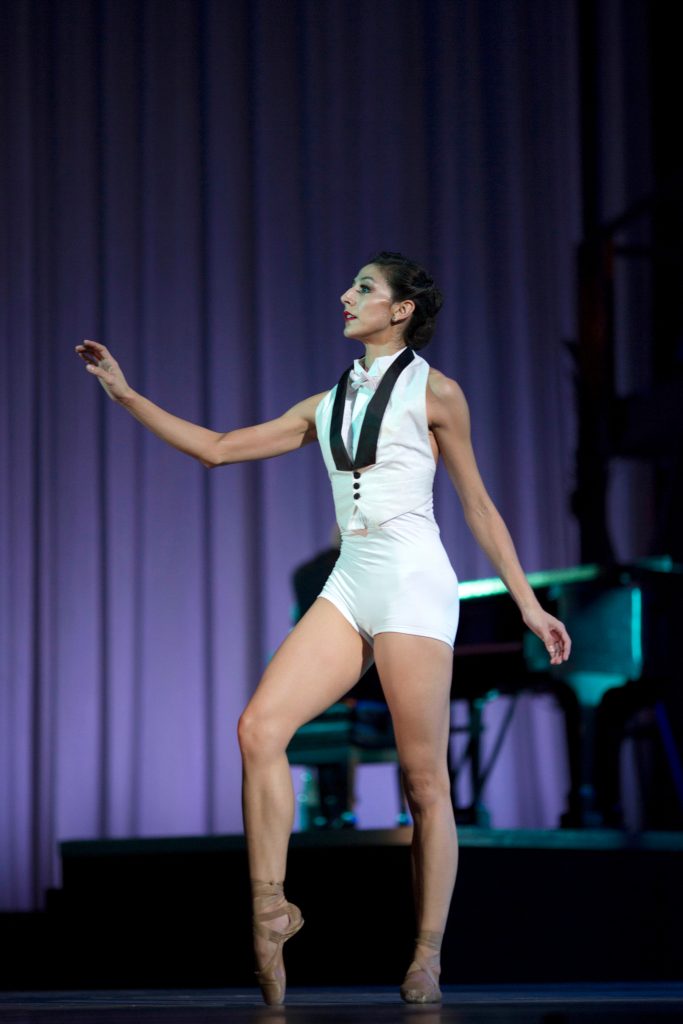 Martina Chavez, Never Stop Falling (In Love), 2014. Photo: James McGrew
Martina Chavez, Never Stop Falling (In Love), 2014. Photo: James McGrew
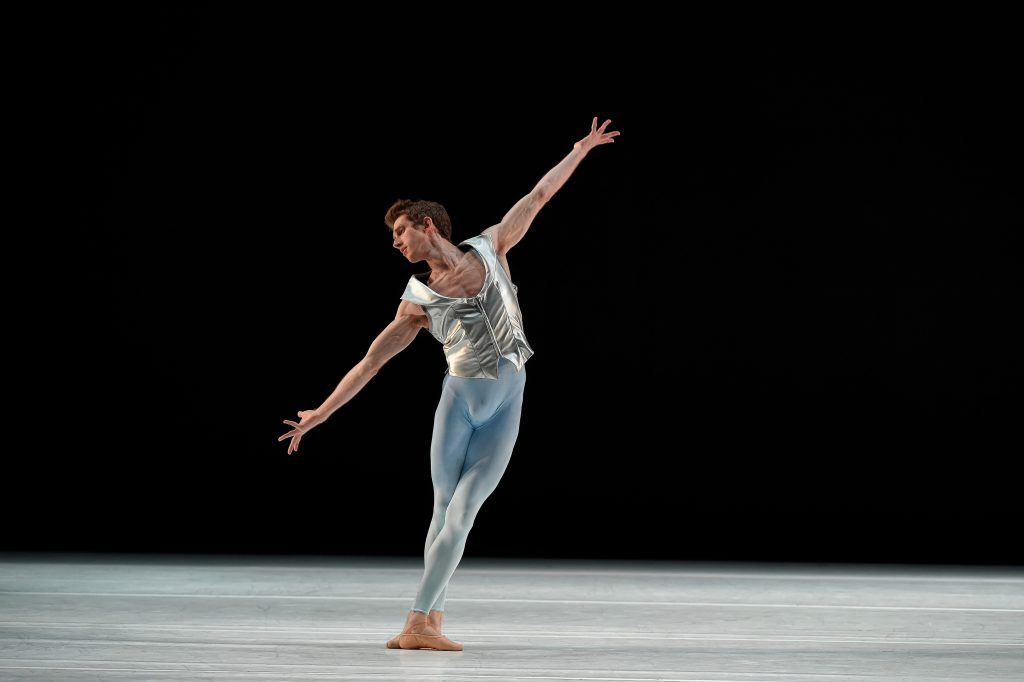 Brian Simcoe, Presto, 2015. Photo: Yi Yin
Brian Simcoe, Presto, 2015. Photo: Yi Yin
He has an unerring eye for placing dramatic dance within evocative architectural sets, like this mirrored wall in Petrouchka,
 Yuka Iino, Petrouchka, 2012. Photo: Blaine Truitt Covert
Yuka Iino, Petrouchka, 2012. Photo: Blaine Truitt Covert
these suspended pieces of corrugated roofing panels in Bolero,
 Artur Sultanov, Bolero, 2008. Photo: Blaine Truitt Covert
Artur Sultanov, Bolero, 2008. Photo: Blaine Truitt Covert
and this steel-framed room in Beautiful Decay.
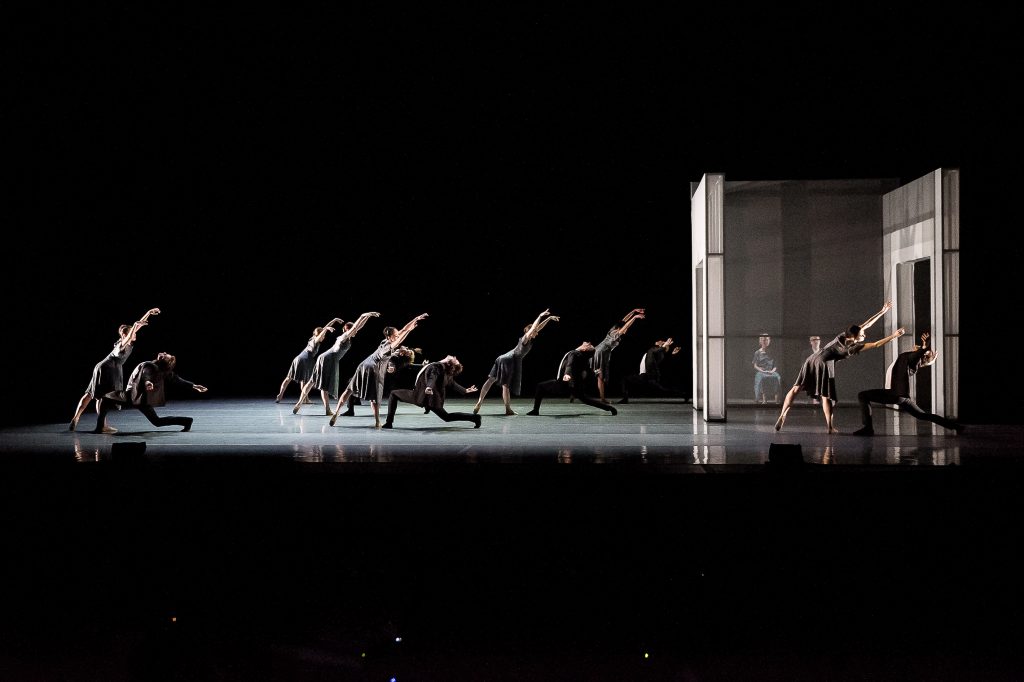 Beautiful Decay, 2016. Photo: Jingzi Zhao
Beautiful Decay, 2016. Photo: Jingzi Zhao
(Plus, his arrangements of groups of dancers always seem to make sense.)
In this video excerpt from Left Unsaid, we see the interplay of all the virtues explored above, coupled with Fonte’s inerrant musicality, to me the final essential element of great choreography.
I urge you not to miss Nicolo Fonte’s next world premiere ballet for OBT in “Giants,” the opening program of our 2016-2017 season, October 18—25 at the Keller Auditorium.
And feel free to enjoy hundreds of additional photographs of OBT dancers in performance and rehearsal in our Flickr albums.
